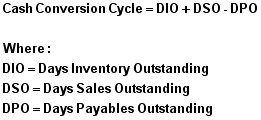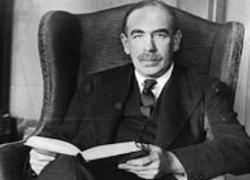
The profitability indicator ratio is self-explanatory; it tells us whether a company is profitable. By using the word "profitable", I mean that the company is able to make use of its resources effectively to generate profits.
For those studying economics, profit does NOT refer to the economic definition of reducing cost and increasing revenue (although both cases indicate better prospects for the company, of course). You need to adjust to this fact because in the income statement, the terms: "income", "profits" and "earnings" are used interchangeably in financial reporting.

Content:
- Profit Margin Analysis
- Effective tax rate
- Return on Assets (ROA)
- Return on Equity (ROE)
- Return on Capital Employed (ROCE)
Profit Margin Analysis
In the income statement, there are four levels of profit or profit margins - gross profit, operating profit, pretax profit and net profit. "Profit Margin" refers to the percentage of profit relative to its net sales revenue.
(ie. "Gross Profit Margin" refers to the percentage of gross profit relative to its total net sales revenue. So what does "operating profit margin", "pretax profit margin" and "net profit margin" mean?)
Formulas:
Gross Profit Margin
Gross Profit Margin
Gross Profit is the most fundamental profit margin formula, whereby the gross profit is simply derived from the difference between the total net sales revenue and the total costs of sales. Cost of sales represents expense related to labor, raw materials and manufacturing overhead used in the production process.
Gross Profit = Total net sales revenue - total costs of sales
Looking at this formula, if total costs of sales decrease, the value of gross profit level will increase. Subsequently, the gross profit margin percentage will increase as well. Thus in a sense the gross profit margin tells investors how efficiently a company is using its raw materials, labor and manufacturing-related fixed assets to generate profits. Certainly a higher margin percentage would be more desirable.
However, the gross profit margin does not take into account the operating expenses. This is where the next level of profit margin comes in: the operating profit margin.
Operating Profit Margin
Operating Profit is derived from deducting selling, general and administrative (SG&A) or operating expenses from the gross profit margin.
Management is key to reducing operating expenses. This ratio should be compared to other companies in the same industry to have a good gauge on the company's management relative to its rivals. The smaller the ratio, the poorer the management in the company.
Pretax Profit Margin
Operating Profit = Gross Profit - Operating Expenses
Management is key to reducing operating expenses. This ratio should be compared to other companies in the same industry to have a good gauge on the company's management relative to its rivals. The smaller the ratio, the poorer the management in the company.
Pretax Profit Margin
A company has access to a variety of tax-management techniques, which allow it to manipulate the timing and magnitude of its taxable income. Thus the pretax profit margin is a more conservative ratio compared to gross profit margin.
Net Profit Margin
The Net Profit Margin is the decisive ratio for investors to see if the company is profitable. It is the ratio of net income to total net sales revenue.
HOWEVER, DO NOT BE LAZY AND SIMPLY BASE YOUR INVESTMENT DECISION ON THE NET PROFIT MARGIN ALONE!
As we can see, the company can be making profits, however assuming the operating profit margin is showing a declining trend, it means that the company's management is getting poorer, and its performance may be reduced in the future if such a trend continues.
Thus, one should go through the entire process of profit margin analysis, going through each ratio and scrutinize them carefully.
Effective Tax Rate
Net Profit Margin
The Net Profit Margin is the decisive ratio for investors to see if the company is profitable. It is the ratio of net income to total net sales revenue.
HOWEVER, DO NOT BE LAZY AND SIMPLY BASE YOUR INVESTMENT DECISION ON THE NET PROFIT MARGIN ALONE!
As we can see, the company can be making profits, however assuming the operating profit margin is showing a declining trend, it means that the company's management is getting poorer, and its performance may be reduced in the future if such a trend continues.
Thus, one should go through the entire process of profit margin analysis, going through each ratio and scrutinize them carefully.
Effective Tax Rate
This relatively simple ratio measures the company's tax rate, which is calculated by comparing its income tax expense to its pretax income.
Formula:
Formula:
The effective tax rate will influence the net profit figure. Investors look out for high net profit margins in companies, and high net profit margins can be achieved in 2 ways :

- Effective Operational results
- Effective tax management maneuverings
It is erroneous to say that a low effective tax rate is good. Rather, investors should look at the effective rate throughout the years. If the effective tax rate fluctuates a lot, one would doubt whether the company's high net profit margin is attained from effective operational results or simply through tax evasion. A relatively stable effective tax rate percentage, and resulting net profit margin, would seem to indicate that the company's operational managers are more responsible for a company's profitability than the company's tax accountants.
Return on Assets (ROA)
The ROA is the ratio between the companies net income and its total assets. It tells investors whether the company is making the best use of its assets to generate profit.
Formula:
Obviously, the higher the ratio, the better the use of company's assets.
However, capital-intensive businesses (with a large investment in fixed assets) are going to be more asset heavy than technology or service businesses. For such capital-intensive businesses, the denominator will have a huge value, causing the ROA to be small, which sometimes can be deceptive to investors.
It is precisely because businesses require different-sized asset bases that investors need to think about how they use the ROA ratio. Investors should analyse the ROA of a company over a period of time to detect positive or negative trends. If peer company comparisons are made, it is necessary that the companies being reviewed are similar in product line and business type. Otherwise, you would be simply comparing apples to orange.
Return on Equity (ROE)
The ROE is the ratio between the companies net income and its total shareholder equity. It measures how much the shareholders earned for their investment in the company. The higher the ratio percentage, the more efficient management is in utilizing its equity base and the better return is to investors.
Formula:
However, the ROE has a major loophole. It does not take into consideration the company's debts; a company taking on a disproportionate amount of debt can artifically increase the ROE, which can be deceptive to investors. If a company pays back its debt, the ROE will suffer, and once again investors may be deceived by the small value of the ROE.
The ROE cannot be used in isolation. The value of the ROE needs to be interpreted in the context of a company's debt-equity relationship. An analysis on the return on capital employed (ROCE) would be the solution to the limitations of the ROE.
ONCE AGAIN, THIS TELLS US THAT WE SHOULD NOT BE LAZY AND JUST LOOK AT THE RETURN ON EQUITY AND COME TO AN INVESTMENT DECISION!
Return on Capital Employed (ROCE)
A more refined version of the ROE, the ROCE is the ratio between the company's net income to its total capital employed, where the capital employed is the sum of the company's total liabilities to shareholder's equity. By comparing net income to the sum of a company's debt and equity capital, investors can get a clear picture of how the use of leverage impacts a company's profitability.
Formula:
 |
The ROCE is arguably the most important profitability indicator. Factoring the company's debt into a company's total capital provides a more comprehensive evaluation of how well management is using the debt and equity it has at its disposal.
Conclusion
We have discussed a few other financial ratios, this time under the category of profitability indicator. One may be tempted to simply look through the profitability indicators without going through its liquidity measurement ratios. However, it is recommended that both should be taken into account when making investment decisions; the liquidity measurement ratio after all ensures safety of a company as it shows whether the company can pay its debts or liquidize its assets to clear its debt in the short term.
Remember the last golden rule: Diligence and patience is key to success.

Acknowledgements























